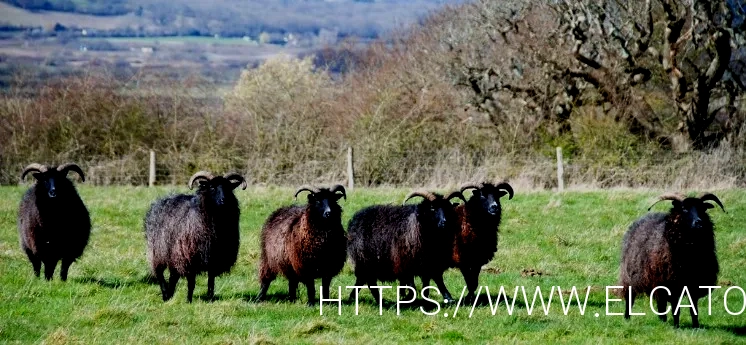Wild Cats 101: What Makes a Big Cat?
This unique hybrid drew worldwide attention and sparked interest in the genetics behind such occurrences. On the other hand, lions have a tawny-colored coat with some variations, ranging from pale yellow to reddish-brown. In some cases, hybrids may be named based on the region where they are found or cultural associations. Records from ancient Egypt, Mesopotamia, and China reveal the presence of these hybrids in royal menageries, where they symbolized prestige and authority. Living in cities and large towns, landscapes dominated by human structures and activity. Savannas are grasslands with scattered individual trees that do not form a closed canopy.

Salt limits the ability of plants to take up water through their roots. Having markings, coloration, shapes, or other features that cause an animal to be camouflaged in its natural environment; being difficult to see or otherwise detect. Living in sub-Saharan Africa (south of 30 degrees north) and Madagascar. The feline leukemia virus (FeLV) is another potentially fatal disease that can affect both house cats and big cats. It can be treated if caught early, but it often leads to other illnesses in cats, including anemia, chronic infections, and cancers. Feline immunodeficiency virus (FIV) is a feline equivalent to human immunodeficiency virus (HIV).

While several of the most commonly found species in cat diet are cosmopolitan non-native species (e.g., Mus musculus, Rattus rattus), there was not a large set of species that were reported across most studies. In fact, most new studies on cat diet yielded hitherto unrecorded species. Rather, and of particular importance on islands, biodiversity hotspots, and other areas with high endemism, we found that cats preyed more generally upon whatever species were available. Studies from regions outside of North America and Australia were greatly underrepresented in this meta-analysis, despite large, well-documented feral cat populations in places like Istanbul, Rome, and Houtong, Taiwan. It’s been harder to draw as strong a line between cats and biodiversity loss in other countries, Legge says. Big cats are carnivores that can be found in Africa (lion, leopard), Asia (lion, tiger, leopard, snow leopard) and the Americas (jaguar).
Size is probably the way most non-scientists think of what makes a big cat and what doesn’t. Scientists have also used this metric in the past to try to categorize cat species. According to Panthera France Managing Director Gregory Breton, this question was all the noise in the eighteenth and nineteenth centuries when species classification was coming into existence. There are many different ways people have classified what makes a wild cat a “big cat.” Three of these include the noise they make, their size and their genetic makeup. As you’ll see, what makes a big cat isn’t agreed upon by every scientist, and, as with most things scientific in nature, it’s a constantly evolving debate.

The ideal big cat enclosure would include a large amount of open space as well as structures to climb in order to challenge your cat physically and keep it in optimal health. In captivity, Doeat.top What do elephants eat they require large enclosures that have extremely high walls or caged-in ceilings. It is a huge commitment and responsibility to properly care for even the smaller wild cats.

Creating hybrids in the wild is relatively rare due to these natural constraints. The history of big cat hybrids can be traced back to ancient civilizations, where rulers and nobles sought to demonstrate their power and wealth by owning exotic animals. This concept of crossbreeding two different big cats has advanced beyond the hypothesis phase, as several big cat hybrids are out in the wild today. The ability to roar comes from an elongated and specially adapted larynx and hyoid apparatus.[11] The larynx is attached to the hyoid bone that is hanging from a sequence of bones. This tissue is made of thick collagen and elastic fiber that becomes denser as it approaches the epithelial mucosal lining.[13] When this large pad folds it creates a low natural frequency, causing the cartilage walls of the larynx to vibrate. When it begins to vibrate the sound moves from a high to low air resistance which makes the roaring.
In the wild, they can live to an age of around 12 years, up to a maximum 19 years for females of some of the species. Unfortunately, their numbers and home ranges have significantly declined over the years worldwide. Find our more about what traits and behaviours big cats have in common, and how they are different. Lepczyk has spent the last two decades compiling evidence of what cats eat—first as a curiosity-driven side project, then as a full-blown scientific endeavor.

Although cats do occasionally prey on other animals, taking a bird here or there doesn’t necessarily impact the survival of the species. Evidence suggests that cat predation is often “compensatory predation”preying on animals that would likely have died anyway from disease or hunger. They also need vitamins and supplements to mimic the nutrients they acquire in the wild to stay healthy. In their native habitats, big cats hunt animals like deer, fish, gazelles, birds, reptiles, and numerous small mammals. They eat the meat of their prey as well as skin, bones, and organs that provide multifaceted nutrients. The Captive Wildlife Safety Act was introduced and passed in the U.S.

Nonetheless, the lack of sampling in many of the most biodiverse locations on the planet suggests that we are likely missing critical locations for the evaluation of cat predation and scavenging. Notably, there are more than 11,000 reptile species globally, but the number of reptile species recorded as eaten by cats was similar to that of mammals (463 and 431, respectively). What is surprising are the relatively high number of amphibians and insects that were identified in the diet, particularly given that many studies do not have complete taxonomic resolution of insects. In particular, because of the nature of amphibian and invertebrate skin and exoskeleton, respectively, there is often far less physical material to evaluate remains in scat or digesta35,44. Furthermore, there is little involvement of invertebrate taxonomists in cat diet studies. Notably, the issue of detectability may decrease in the future as molecular approaches are used in scat analysis45.

A focus of previous research has been on cat predation of species of conservation concern49,55,56. By collating the global reports of predation and scavenging by cats, our findings create a more complete picture of the large number of IUCN Red List species, especially birds and mammals, known to be consumed, and potentially impacted, by cats. Since we did not look at national or regional classifications of species of conservation concern, nor at subspecies or distinct population segments, it is likely that our list contains many additional taxa of concern at local scales. Furthermore, considering that many species, especially invertebrates were Not Evaluated by the IUCN and/or were not identified in dietary studies to a level to check evaluation, additional threatened species likely exist within the diet of cats in our studies. These complex issues affect entire species, whole ecosystems, and millions of animals. A cat will eat whatever is easiest to obtainbe it garbage, cat food, or sometimes prey.
The roar in good conditions can be heard 8 or even 10 km (5 or 6 mi) away.[14] All five extant members of the genus Panthera contain this elongated hyoid but owing to differences in the larynx the snow leopard cannot roar. Unlike the roaring cats in their family, the snow leopard is distinguished by the lack of a large pad of fibro-elastic tissue that allows for a large vocal fold. Well-intentioned (or … threatening?) gifts of dead birds, rats, and lizards are familiar to outdoor cat owners—even my shockingly uncoordinated indoor cat has killed a spider or two in her day. But an analysis published today in Nature Communications, led by Auburn University ecologist Christopher Lepczyk, reveals that there’s shockingly little that cats don’t eat.
In other situations, hybrids are named using portmanteau words that combine the names of the parent species. Introducing hybrids can disrupt these delicate balances, leading to unpredictable ecological consequences. Maintaining the genetic purity of species in their natural habitats is crucial for preserving their ecological roles and evolutionary history. These hybrids attracted large crowds and fueled public intrigue about big cat hybridization. Throughout history, curiosity has played a significant role in the hybridization of big cats.
We iteratively evaluated any new sources identified in the references for both data and additional articles or databases in an exhaustive manner (i.e., each manuscript’s references were found and evaluated for diet if they were related to cats). After this exhaustive search we identified 544 unique publications (books, journal articles, theses, and agency reports) that contained data on cat diet. Records that were not identified to the species level (i.e., only to genus) were removed from the analysis, leaving us with 533 unique publications with records of species consumed by cats. For the purposes of this research, when records were identified to the subspecies level, we reclassified them to the species level.


